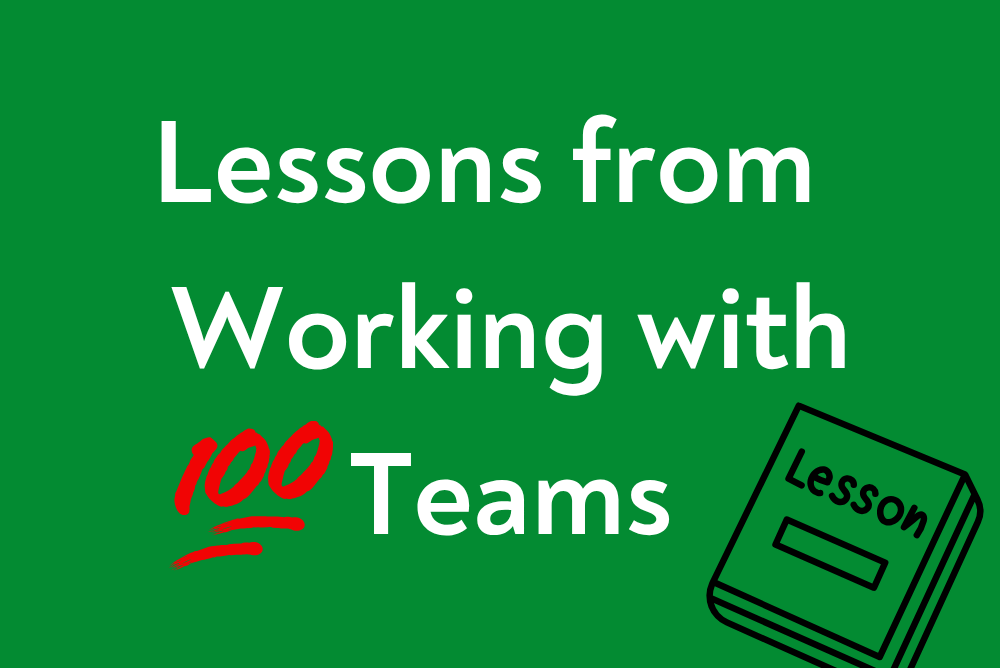
Lessons Learned from working with over 100 teams
After working with over 100 teams across various industries, some patterns keep cropping up that affect both delivery and team morale.
Here are some reflections and actionable advice on how to keep team morale high and to help teams work more effectively without burning out.
These insights are in no particular order.
Listen to the People Doing the Work
A significant cause of delays is management ignoring the insights of the people on the front lines. Want to crush team morale? Make decisions without consulting them. Research shows that inclusive decision-making can increase productivity by as much as 25% (Deloitte, 2020).
Estimates Belong to the Team
Accurate estimates come from those who actually do the work – sounds obvious, right. When timelines are imposed externally, it not only results in inaccurate estimates, but also negatively impacts team morale, creates unnecessary stress and results in unrealistic timelines.
Motivation: Beyond Rewards
Motivation thrives in an environment of support and encouragement. The way you incentivise teams can significantly impact their performance. Early in any engagement, I focus on how the team is rewarded and foster open communication with HR to align on cultivating a high-performing culture.
Understanding and focusing on intrinsic motivators such as autonomy, mastery and purpose can help to improve team morale.
Scope Creep is a Productivity Killer
Scope creep derails projects, initiatives – whatever you call them in your organisation. Learn to say “No.” Accepting new work means letting go of something else. Prioritise ruthlessly, and remember, priorities can evolve.
Focus on Outcomes, Not Outputs
For every item in your backlog, ask yourself: why are we doing this? Can it be tied to a clear outcome? If not, it’s time to shift the conversation to outcomes over outputs. Ask “why” are we doing this backlog item, or “what will be different in the future when this has been released. Be bold and remove one unnecessary item from the backlog to help you get started. It gets easier as you go!
Teams That Bond, Perform Better
High-performing teams understand and articulate their purpose. Knowing their “why” improves team morale and drives focus and results.
Teams that take time to bond also produce better outcomes. Whether it’s quizzes, games, foosball, or virtual coffee breaks, small moments of connection can prevent burnout and keep creativity alive.
Laughter builds resilience – teams that genuinely enjoy working together are more collaborative and productive.
Leadership with Vision is Essential
Strong leadership with clear vision and strategy is irreplaceable. Promoting individuals without proper preparation leads to frustrated leaders and uninspired teams.
Empower Through Autonomy and Trust
Giving teams ownership of their work drives accountability and engagement. When teams have the freedom to innovate and problem-solve in their own way, it builds trust, improves team morale and fosters psychological safety.
Make Communication a Priority
Miscommunication is one of the top causes of delays and can also cause issues with team morale. Invest in clear and consistent communication – whether through digital tools, face-to-face check-ins, or team syncs. Aligning on outcomes and maintaining open dialogue keeps everyone connected and on the same page. It’s simple in theory but one of the toughest things to get right.
If you’d like help setting your teams up for success, or enabling them to how to keep team moral high whilst achieving better outcomes please get in touch for a free consultation call.
The Essential Guide to Continuous Improvement – Part 1 This is not your Average Continuous Improvement Guide Welcome to the second instalment …
Struggling with Meeting Engagement? Use PODS We were in the middle of a high-pressure project. One that everyone across the business was …
The Ultimate Product Roadmap Guide – A Practical Deep Dive “That’s not on the Roadmap!” It’s that trusty tool we all turn …
Don’t Fix Symptoms – Identify your Root Causes using a Current Reality Tree Suzanne Morrison In this post, we will explore how …




